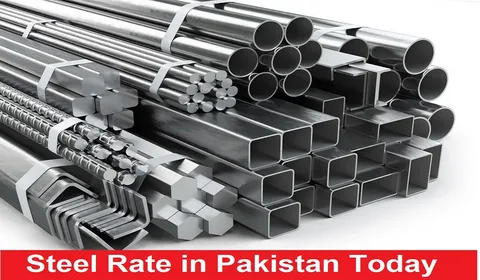Steel plays a critical role in Pakistan’s construction, manufacturing, and industrial sectors. Whether you’re building a house, running a fabrication business, or investing in real estate, understanding the steel rate today is essential for managing costs effectively. Fluctuations in steel prices impact everything from residential construction projects to large-scale infrastructure developments. This blog post provides insights into current steel rate in Pakistan, factors affecting it, and why staying updated is crucial.
Understanding Steel Prices in Pakistan
The steel rate in Pakistan varies daily based on market demand, production costs, global steel trends, and local economic conditions. Typically quoted per kilogram or per metric ton, these rates are published by steel manufacturers and updated regularly by market sources and online platforms.
Common Types of Steel Products and Their Rates
Deformed Bars (Sarya): Used in RCC structures, deformed bars are a fundamental component in residential and commercial construction.\n- MS (Mild Steel) Bars: Commonly used for general construction and industrial use.\n- Girders and Channels: Used for structural framework in buildings, bridges, and factories.
As of the steel rate today, the average price for Grade 60 steel ranges between PKR 260 to PKR 280 per kilogram in major cities like Lahore, Karachi, and Islamabad. These rates may vary based on the brand, region, and transportation costs.
Factors Influencing Steel Rate Today in Pakistan
Several dynamic elements contribute to changes in the steel rate in Pakistan, including:
1. Global Market Trends
Pakistan imports raw materials for steel production. Any fluctuation in the international steel market or disruptions in global supply chains (due to geopolitical tensions, shipping delays, or raw material shortages) can directly influence domestic prices.
2. Exchange Rates
Since steel production relies on imported materials like iron ore and coal, the value of the Pakistani Rupee against the US Dollar significantly affects production costs. A weaker rupee leads to higher import costs, thereby increasing the steel rate today.
3. Demand and Supply Fluctuations
Increased demand from the construction and real estate sectors usually drives up prices. On the other hand, periods of economic slowdown, reduced construction activity, or government restrictions may lead to a dip in steel demand and thus lower rates.
4. Government Policies and Duties
Taxes, tariffs on imported materials, and energy surcharges imposed by the government play a crucial role in determining steel prices. For instance, high electricity and gas tariffs for the industrial sector can increase steel production costs.
5. Transportation and Fuel Costs
Rising fuel prices lead to higher logistics and transportation costs, which in turn influence the final price of steel products delivered to retailers or end-users.
Why Staying Updated with the Steel Rate in Pakistan Matters
If you’re planning a construction project or managing a business dependent on steel, keeping track of the steel rate in pakistan helps with budgeting, timely purchasing, and avoiding unnecessary delays. Many contractors and developers prefer buying steel in bulk when prices are lower to save significantly on costs.
Additionally, by monitoring daily updates, investors and procurement managers can make smarter, data-driven decisions.
Where to Find Reliable Steel Rate Updates
Conclusion
The steel rate today in Pakistan is a vital indicator for anyone involved in construction or manufacturing. With multiple factors like global markets, currency rates, and government regulations influencing prices, staying informed is the key to making sound financial decisions. By understanding what affects steel prices and tracking them regularly, individuals and businesses can navigate the market more effectively and avoid unexpected cost hikes.








